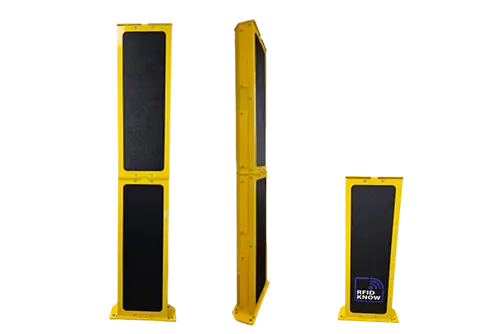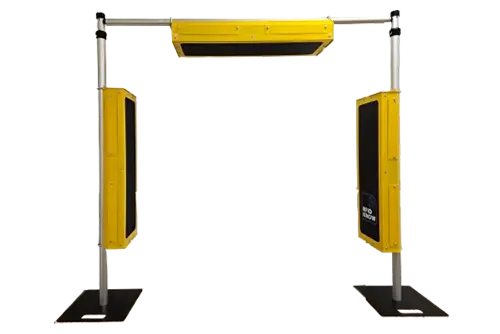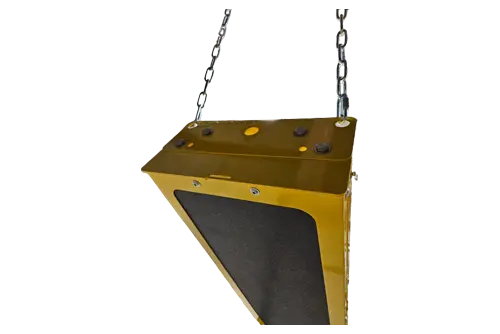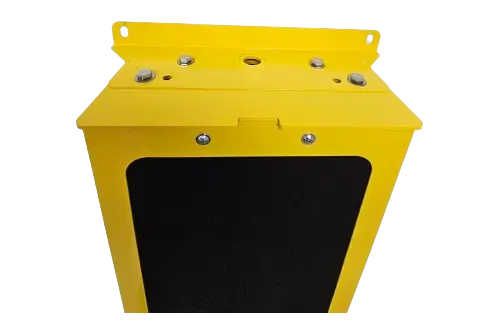
RFID-enabled dock door portals help improve the productivity and throughput of manufacturers, distributors, and fulfillment teams. They’re designed to be durable, serviceable, and easy to implement.
Integrated RFID portals monitor items as they pass through dock doors and conveyors, checkpoints, zones, and more. They also help to increase inventory accuracy and eliminate shipping errors.
What is an RFID Dock Door Portal?
An RFID dock door portal is a device that scans incoming and outgoing RFID tags as they pass through an entrance. This technology is a powerful data acquisition tool that can provide valuable insights to warehouse operations and improve product tracking.
In RFID technology, a passive tag emits a small radio signal that activates the tag when it comes in close proximity with a fixed reader. The tag then transmits the information it contains to the reader, which updates the WMS or inventory system.
This type of technology is used in various commercial and industrial settings to help improve workflow management, asset tracking, traceability, and compliance applications. It is particularly useful in warehouses, manufacturing plants, pharmaceutical plants, labs, hospitals, and retail backrooms.
Zebra’s transition RFID portal, for example, automates and improves the efficiency of formerly manual data collection and product flow operations. These portals feature the company’s FX9600 RFID reader and unique Multi-Linear Wave antennae, which combine to deliver high-performance reading.
How Does an RFID Dock Door Portal Work?
An RFID dock door portal, also known as an RFID gate, is a device that detects and registers RFID tags when they pass through an entrance or a passageway. RFID portals can play a vital role in implementing RFID for distributors, manufacturers, and warehousing within a retail supply chain. This helps companies track tagged items that are traveling through a warehouse, manufacturing plant, distribution center, or any other facility that needs to quickly catalog a shipment.
The technology works in a similar manner to bar code scanning, with a transceiver that generates a radio signal and an antenna that sends the signal to a RFID tag when it passes within range. Once a tag has been registered, the information is then stored in a database for further processing.
RFID technology is a great way to improve asset visibility and accelerate the time it takes to process shipments. This can mean that warehouses have less labor, reduce shipping costs, and increase customer satisfaction.
RFID Portal Types
RFID portals aren’t one-size-fits-all. Different facilities have different layouts, traffic flows, and requirements. That’s why we offer a range of portal types to match your environment and application—ensuring accurate reads, confident installation, and optimized performance.

Floor Mounted
- Individual or stacked units for high-density tag reads
- Superior zone control at dock doors and high-traffic points

Pole Mounted
- U-bolt mounts for poles or square tubing
- Ideal for building RFID “tunnels” to maximize read coverage

Hang Mounted
- Suspended above doorways, conveyors, or workstations
- Adjustable with cables or chains for precise leveling

Flush Mounted
- Installed directly on walls or ceilings where space is limited
- Low-profile option for discreet, streamlined applications
How Can DCs Use RFID Portals to Reduce Manual Scanning?
At most distribution centers, dock doors are bottlenecks where workers have to scan every carton or pallet by hand. Because barcodes require line-of-sight, this slows throughput and increases the risk of errors.
RFID portals remove that friction. With fixed readers at dock doors, tag data is captured automatically as shipments move through—no pausing or aiming required.
Benefits include:
- Bulk verification of pallets and cartons in seconds
- No line-of-sight needed, reducing labor steps
- Real-time WMS updates for instant visibility
- Fewer errors and less rework at shipping and receiving
- Lower labor costs and smoother freight flow
💡 Tip: Not sure if RFID is the right move for your distribution center? Our free RFID ROI Calculator shows how much you can save by reducing labor costs, cutting errors, and speeding up throughput—so you can see the value before you invest.
What Types of Shipments Can RFID Portals Track at Dock Doors?
How Do RFID Portals Improve Shipping and Receiving Accuracy?
Errors at dock doors are costly. A single mis-shipment can lead to chargebacks, delays, and frustrated customers. RFID portals eliminate much of that risk by validating shipments automatically as they enter or leave the warehouse. Instead of relying on manual barcode scans, portals instantly verify that the right products are moving through the right door at the right time.
Key benefits:
- Automatic validation of inbound and outbound shipments
- Fewer mis-shipments and chargebacks
- Faster, more accurate receiving and shipping processes
- Higher customer satisfaction through reliable order fulfillment
For receiving, that means inbound freight can be reconciled against purchase orders in seconds. For shipping, it ensures orders are loaded correctly before they leave the dock—preventing costly returns or fines from retailers. The result is cleaner data, fewer mistakes, and more reliable service across the supply chain.

Getting Started
RFID portals come in a variety of configurations, each designed to fit different workflows and facility layouts. Transition portals monitor goods moving through dock doors, wall-mounted portals capture reads in tight or fixed locations, and tunnel portals positioned over conveyors track items automatically as they move along the line.
The right choice depends on your environment, throughput, and use case. Starting with the right portal type ensures accurate reads, smoother operations, and a faster path to ROI.
Interested in RFID?
An RFID tracking system can help organizations of all sizes improve their supply chain efficiency. Contact the CYBRA team to schedule a demo today.















